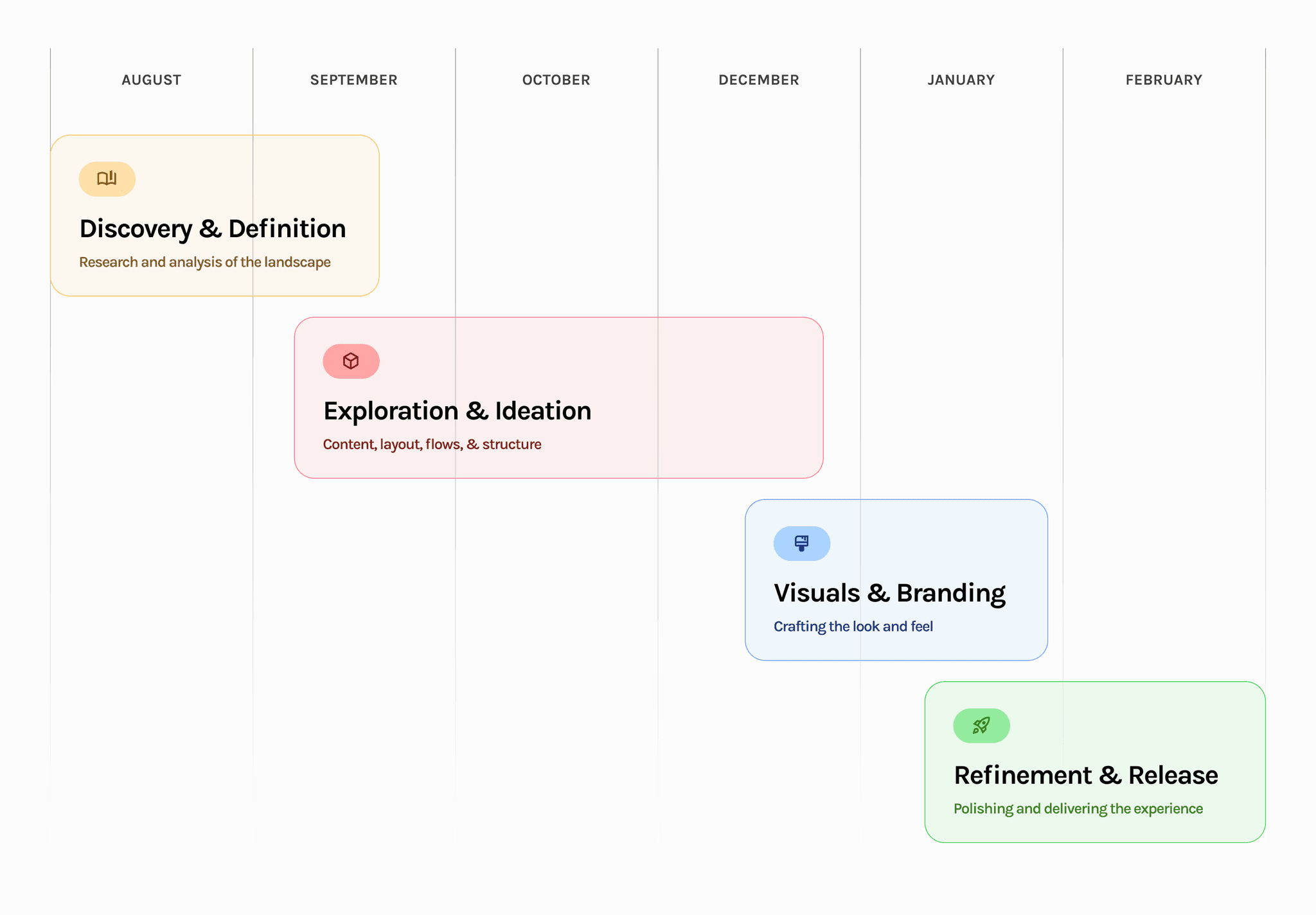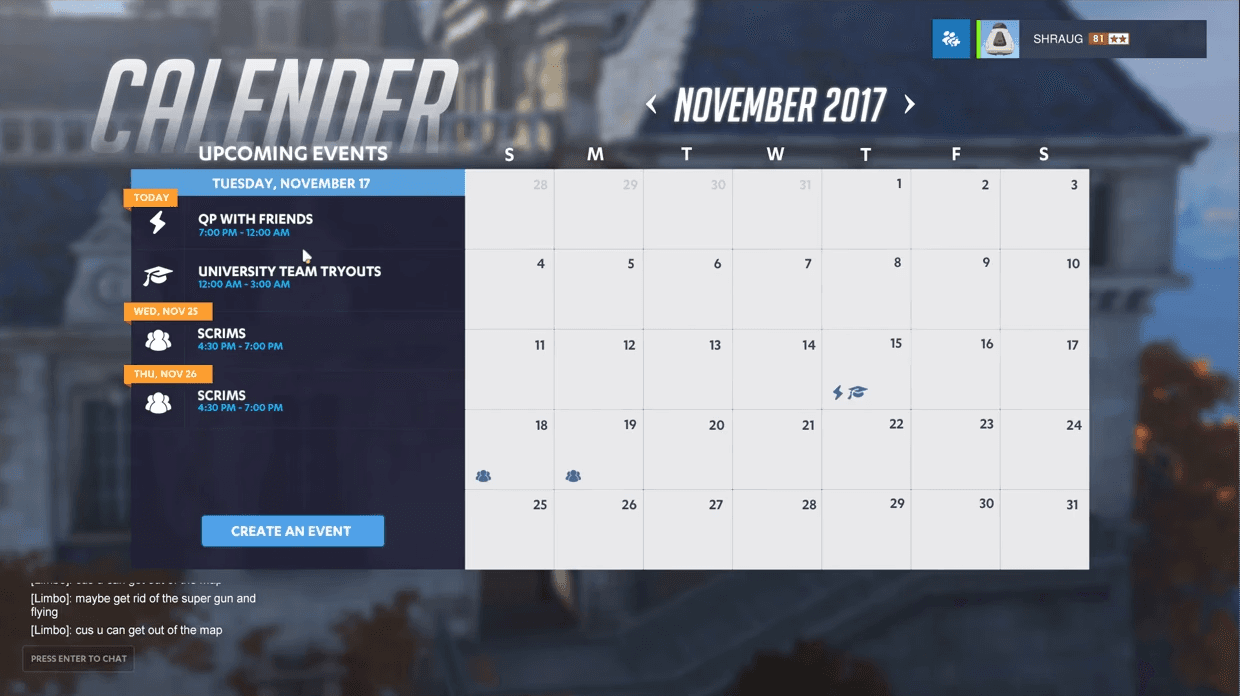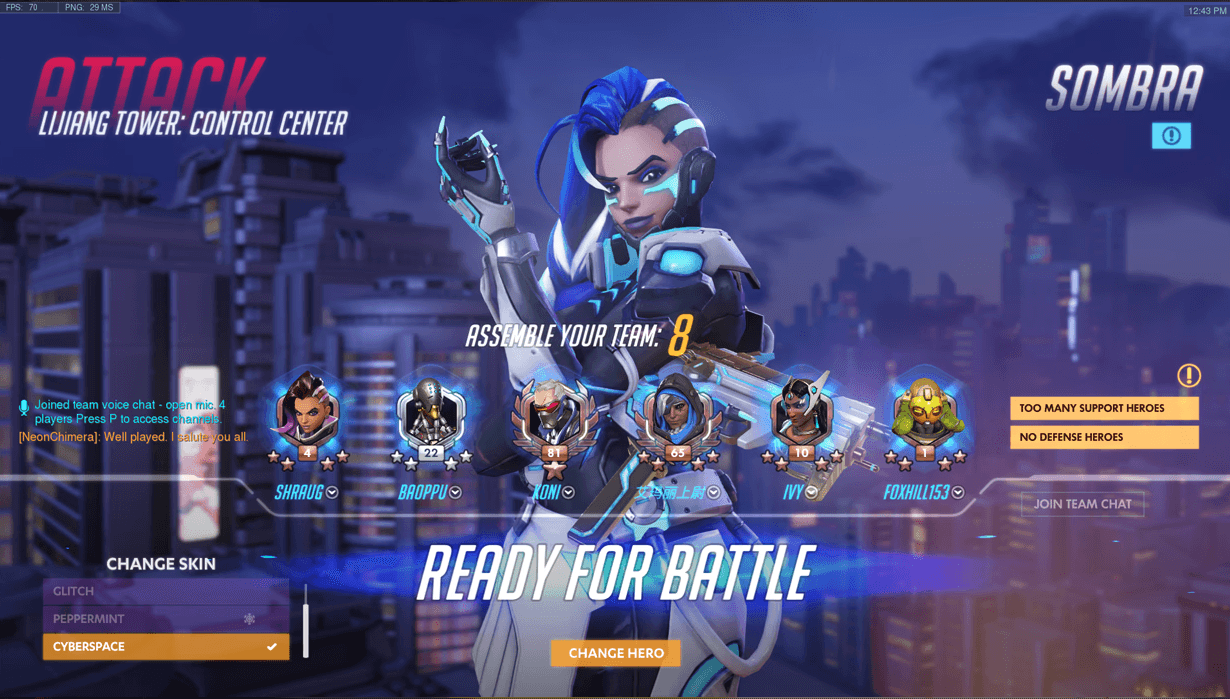Enhancing the Overwatch experience with features like Calendar, File Share, & In-Game Skin Select.
Concept
3 weeks
September 2017
Role: UX Lead
Limited Social Connection — Players lack robust tools for seamless communication and coordination outside of matches. This hinders team formation, event planning, and community building.
Cumbersome Customization — Player expression is hindered without the ability to change skins in-game.
Disjointed Coordination — Whether you're a pro or a casual, giving players the ability to see upcoming events or schedule their own queue sessions with friends can help get players together.
CHALLENGE
Design principles
Platform Consistency
While innovating, adhere to established Overwatch design patterns and platform conventions to maintain a sense of familiarity for players. This ensures a smooth transition and avoids unnecessary learning curves.
Frictionless Customization
Make the process of customizing heroes, loadouts, and profiles as seamless and enjoyable as possible. Reduce friction in the interface and provide clear visual feedback to enhance the customization experience
Prioritizing Social
Prioritize pathways to connect with friends, join groups, and access social features.

OVERWATCH CALENDAR (NEW)
Mends schedule conflicts by providing a centralized place for players to see their friends' availability, schedule games together, and be notified of upcoming events.
OVERWATCH FILE SHARE (NEW)
Encourage content creation and foster a more vibrant and engaged community where players can showcase their creativity and share their in-game achievements.
IN-GAME SKIN SELECT (NEW)
Unlocking true customization — In-game skin selection allows players to express their style on the fly, without missing a beat.
LOOKING BACK
Retrospective
HOW COULD THESE DESIGNS HAVE BEEN IMPROVED?
Project takeaways.
Iterative Design is Crucial — Continuous feedback and iteration are essential for refining the user experience. Conducting usability testing and gathering player feedback would ensure these designs meet their needs and expectations.
Deeper Design Explorations — Documenting a wider range of design iterations and alternatives, even if not fully prototyped, would have been great to show.
Social UX is Key — Prioritizing social interaction is crucial. Designing intuitive tools for communication, coordination, and community building can significantly enhance the player experience.






